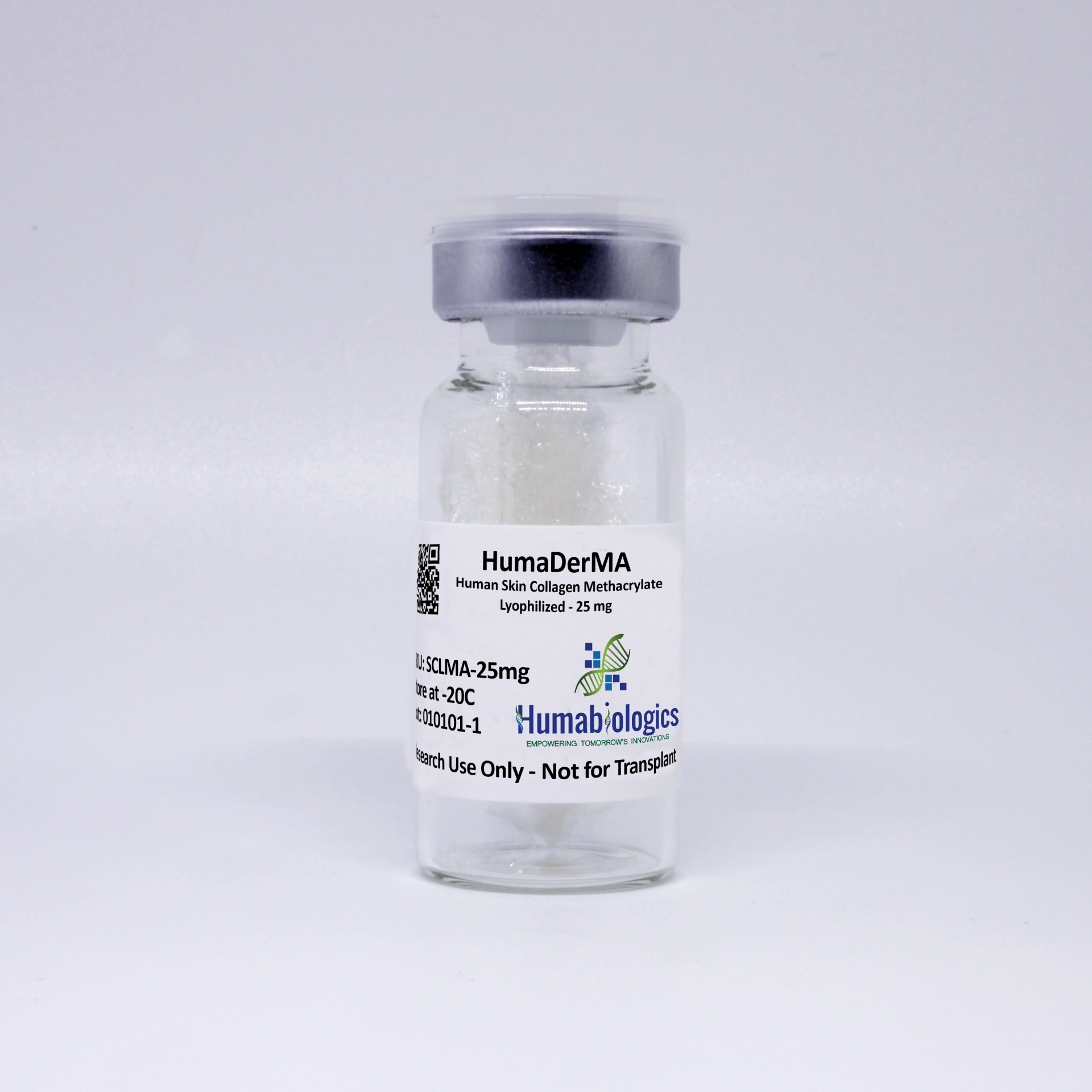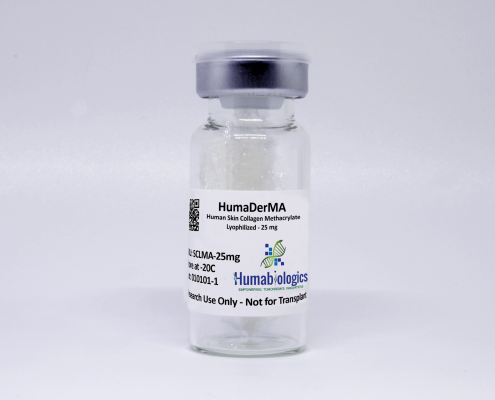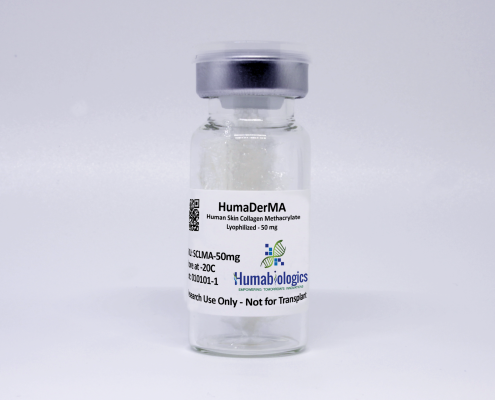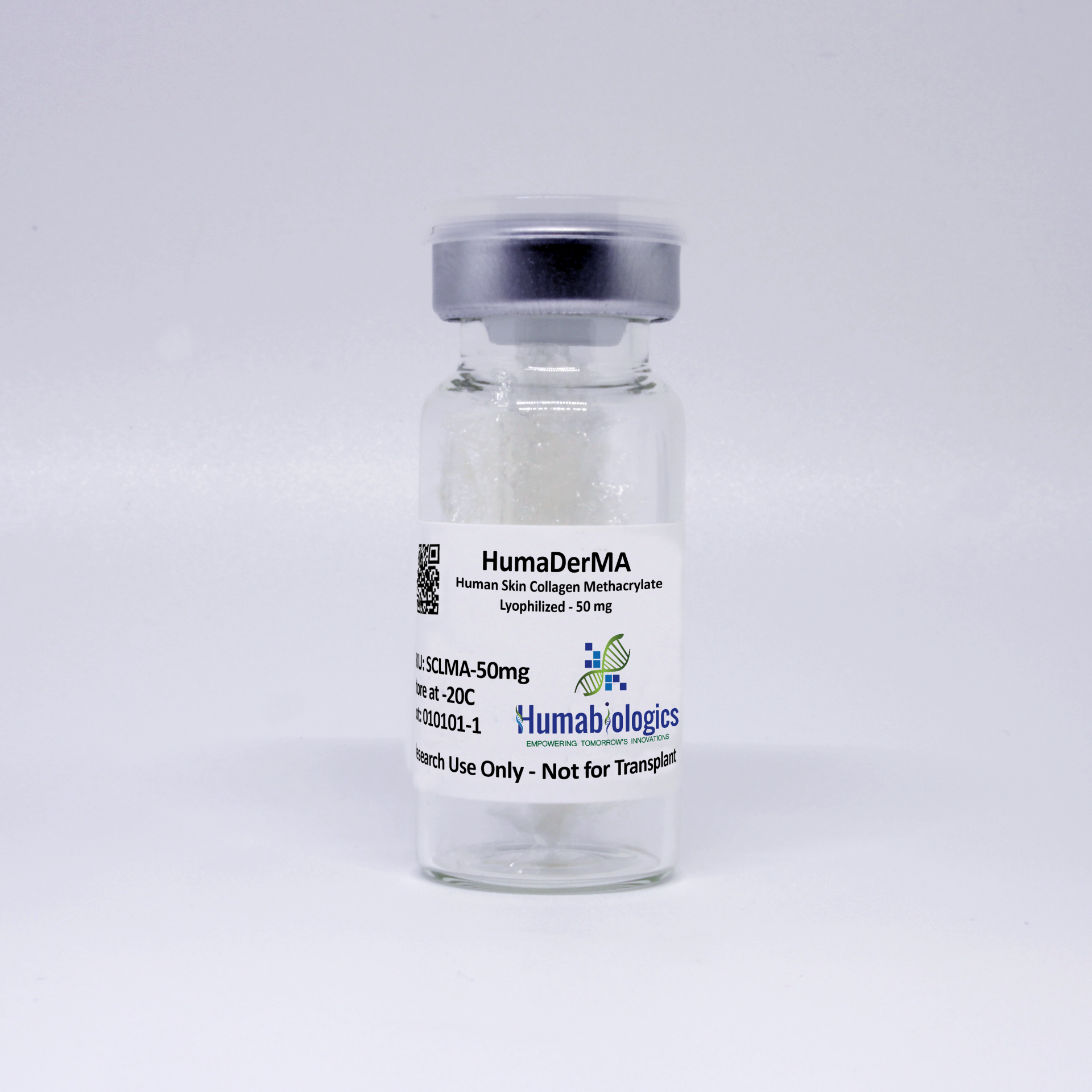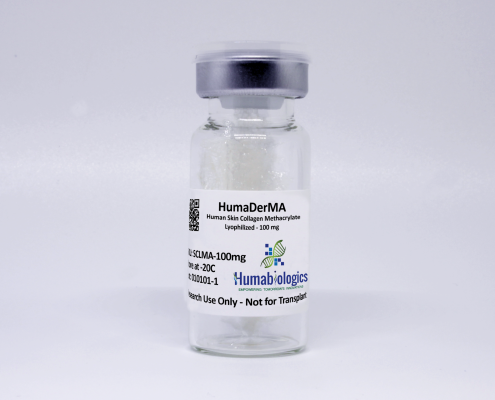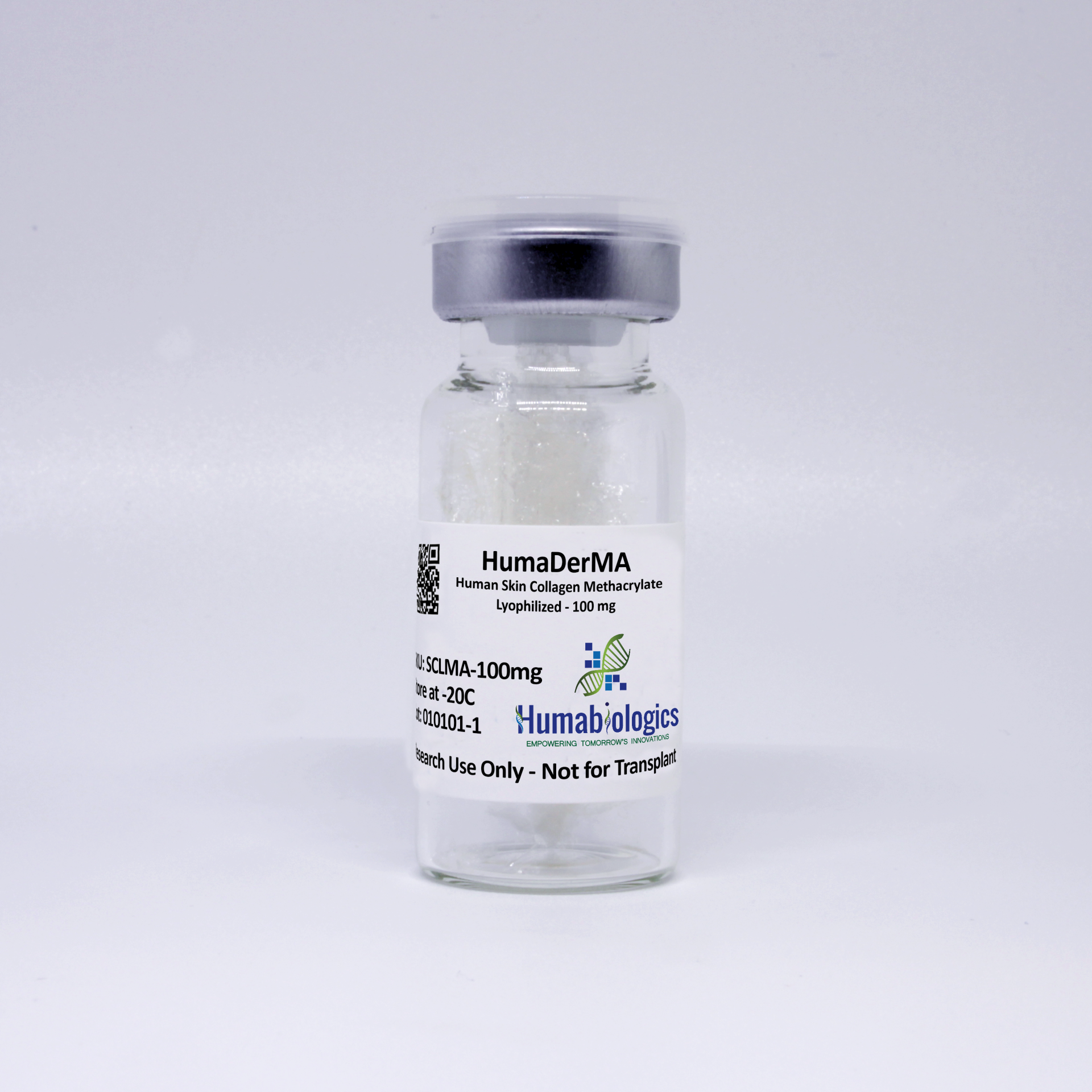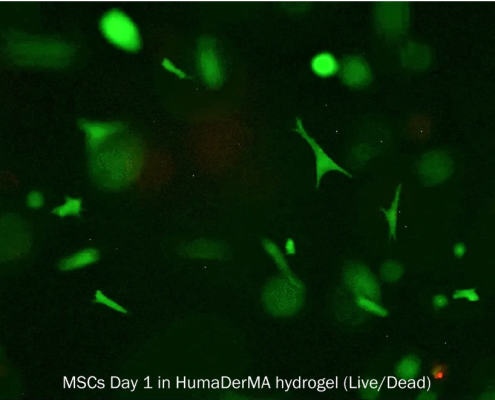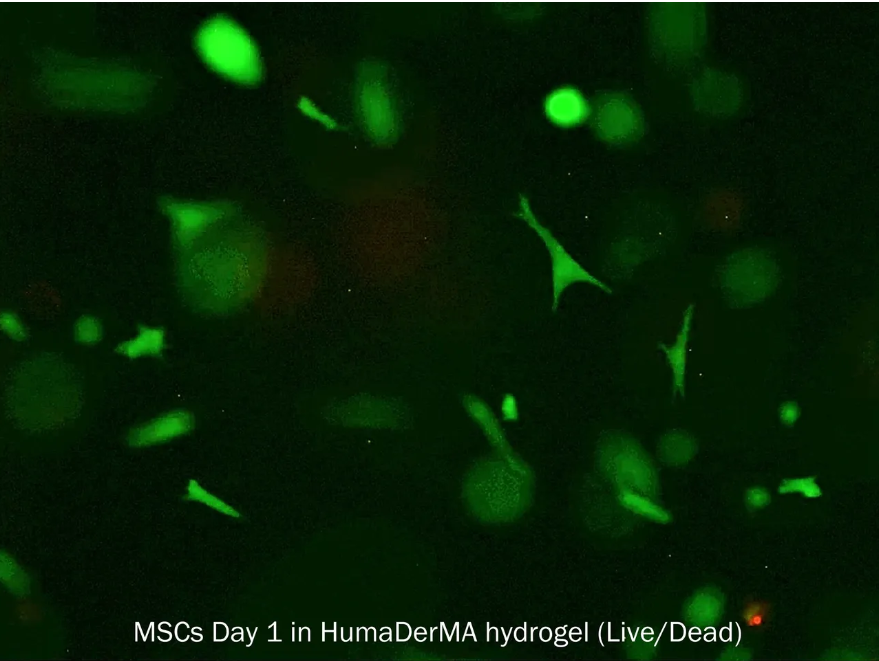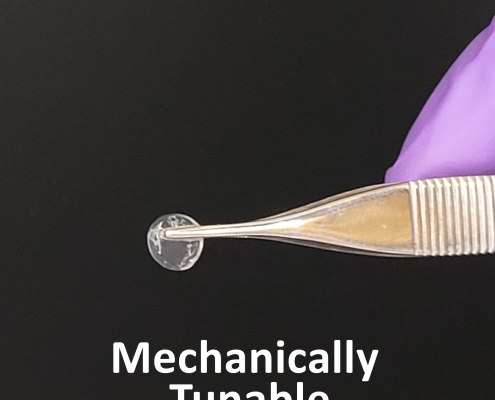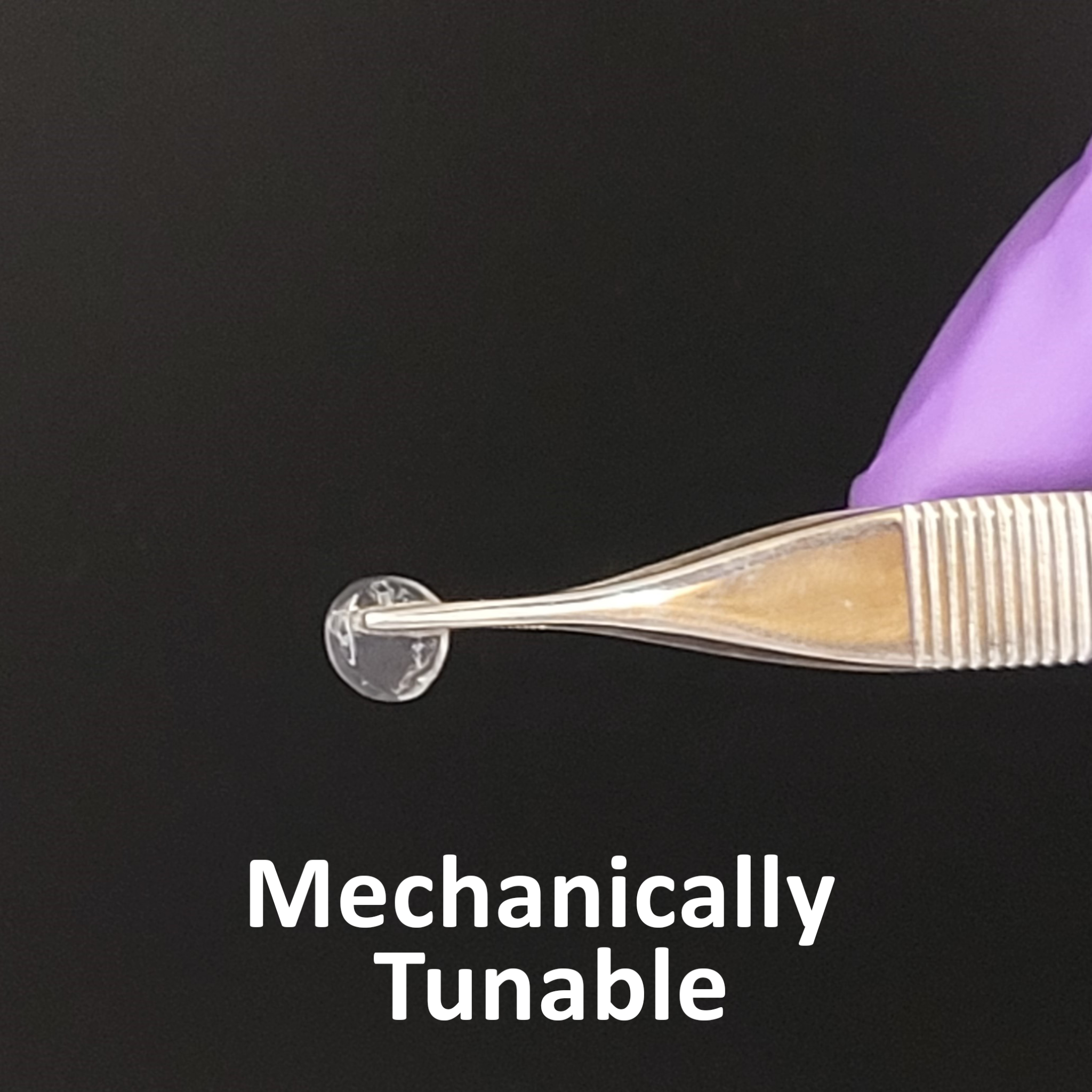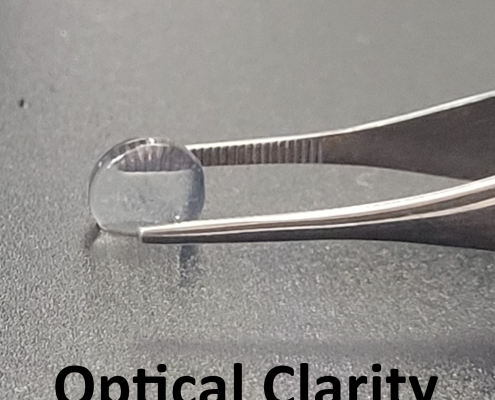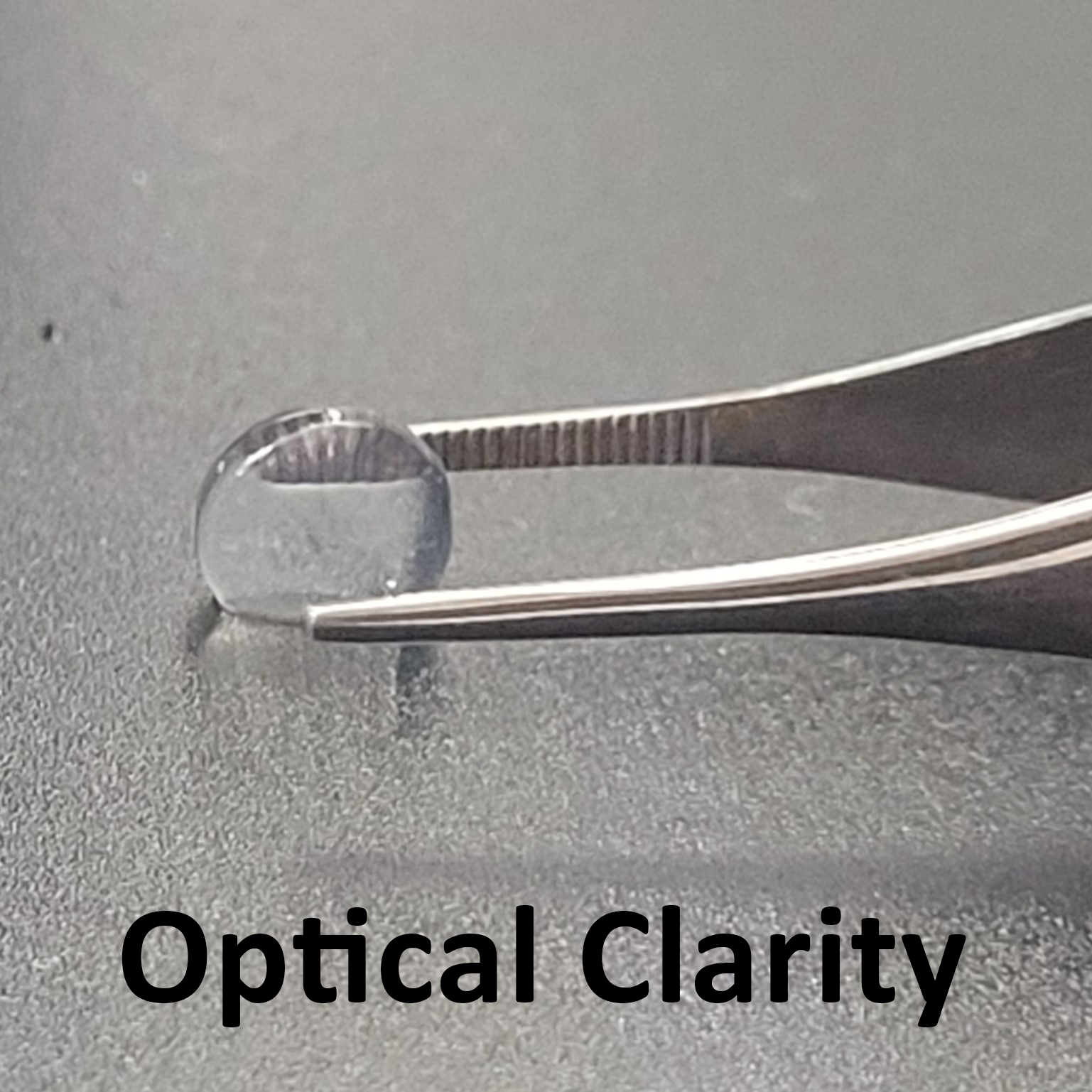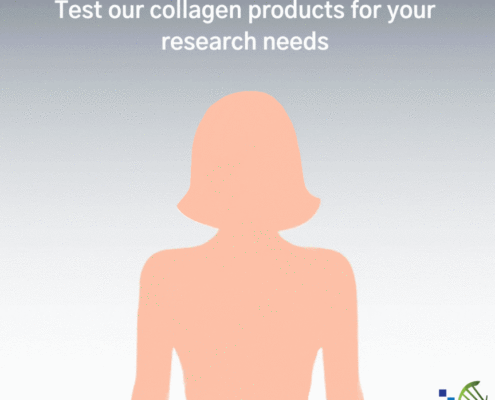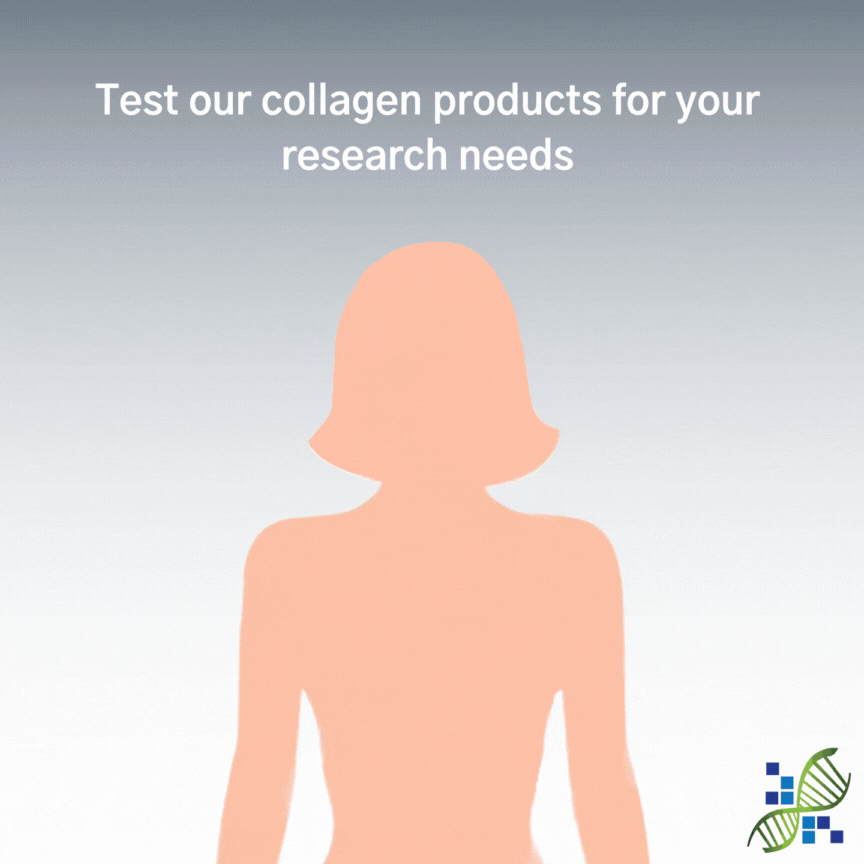HumaDerMA®
Human Skin Collagen Type I Methacrylate, Lyophilized
SKU: SCLMA
HumaDerMA® is a methacrylated version of Humabiologics’ human skin collagen, which is extracted from nutrient-rich human skin tissue sourced strictly from tissue partners who comply with the requirements of transplantable human tissue. Its ability to be photocrosslinked allows for a tunable 3D gel with a wide range of applications including 3D bioprinting, 3D culturing, and many other tissue engineering and regenerative medicine research.
Background
Product Description
HumaDerMA® is a methacrylated version of Humabiologics’ human skin collagen. Its ability to be photocrosslinked allows for a tunable 3D gel with a wide range of applications including 3D bioprinting, 3D culturing, and many other tissue engineering and regenerative medicine research applications.
Note: requires a photoinitiator such as Irgacure 2959 or LAP.
Type I Collagen is the most abundant type of collagen in the human body, as a major structural matrix protein in skin, and many other tissues (bone, tendon, and fibrous connective tissues) [1]. There are a number of types of collagen identified to date, and all are composed of molecules containing three polypeptide chains arranged in a triple helical conformation [2]. The types of collagen differ slightly in the primary amino acid sequence of their polypeptide chains. Type I collagen is a heterotrimer composed of one α2(I) chain and two α1(I) chains [3].
Various types of cell surface receptors present on diverse types of mammalian cells recognize the collagen triple helix structure and facilitate cell attachment to collagen materials, including films and scaffolds. The most characterized cell receptors are the integrins α1β1 and α2β1 [4]. Many cell types express both forms of integrin, including mesenchymal stem cells (MSCs), fibroblasts, endothelial cells, chondrocytes, osteoblasts, and lymphocytes[3, 5-7]. Smooth muscle cells interact with collagen via α1β1, and epithelial cells attach via α2β1 [8, 9]. Collagen type I is characterized by the presence of three regions on SDS-PAGE corresponding to molecular weights. The Alpha region has a molecular weight of 100 KDa and consists of two α1 chains and one α2 chain. The Beta region has a molecular weight of 200 KDa and consists of two α1 chains fused together and α1 α2 chains fused together. The Gamma region has a molecular weight of 300 KDa and consists of overlapping two α1and one α2 chains.
Tissue Source
Type I collagen is isolated from human skin sourced strictly from American Association of Tissue Banks (AATB) accredited and FDA registered tissue banks and organ procurement organizations (OPOs). Humabiologics strives to meet research needs by providing high quality biomaterials obtained from tissue partners who comply with requirements for transplantable human tissues under 21 CFR 1271 of the Food and Drug Administration (FDA).
Precautions and Disclaimer
HumaDerMA® is obtained from human tissue that has been tested and found negative for minimum of HIV-1 and -2, hepatitis B, and hepatitis C, as well as other infectious agents. Please review the Safety Data Sheet (SDS) for information regarding hazards and safe handling practices. HumaDerMA® is for research use only and is not intended for human use, diagnosis, screening, household, food, or other uses.
Storage Conditions/Reconstitution
HumaDerMA® should be stored at -20 °C upon receipt. Collagen is a stable protein if it is stored frozen while minimizing freeze-thaw cycles. Research grade products have a shelf life of 6 months upon receipt.
HumaDerMA® can be reconstituted in HCl or acetic acid. HumaDerMA® is soluble in 10-20 mM HCl with a final pH of 1.9-2.1. Reconstitution may take 3 hours at ambient temperature with vigorous shaking/vortexing or overnight at 4 °C. Solution can be briefly centrifuged to remove bubbles. Do not let the temperature exceed 30°C during reconstitution. After reconstitution, solution should be used immediately or stored at 4 °C for no more than 3 months.
References
- Bornstein, P. and H. Sage, Structurally distinct collagen types. Annu Rev Biochem, 1980. 49: p. 957-1003.
- Tanzer, M.L., Cross-linking of collagen. Science, 1973. 180(4086): p. 561-6.
- Heino, J., The collagen family members as cell adhesion proteins. Bioessays, 2007. 29(10): p. 1001-10.
- Barczyk, M., S. Carracedo, and D. Gullberg, Integrins. Cell Tissue Res, 2010. 339(1): p. 269-80.
- Heino, J., The collagen receptor integrins have distinct ligand recognition and signaling functions. Matrix Biol, 2000. 19(4): p. 319-23.
- Ivaska, J., et al., Cell adhesion to collagen. Is one collagen receptor different from another? Vol. 30. 1998. 273-283.
- Goessler, U.R., et al., In vitro analysis of integrin expression in stem cells from bone marrow and cord blood during chondrogenic differentiation. J Cell Mol Med, 2009. 13(6): p. 1175-84.
- Ebert, E.C. and A.I. Roberts, Human intestinal intraepithelial lymphocytes bind to mucosal mesenchymal cells through VLA4 and CD11A. Cell Immunol, 1996. 167(1): p. 108-14.
- Gilcrease, M.Z., Integrin signaling in epithelial cells. Cancer Lett, 2007. 247(1): p. 1-25.
Instructions for Use
Making 3D Crosslinked Gels
Note: The following are general recommendations. Researchers should optimize parameters based on their specific application. All procedures should be performed in a cold room or on ice. All reagents should be cooled prior.
- Reconstitute HumaDerMATM in 10-20 mM HCl with a pH of 1.9-2.1. It is recommended to use ultrapure sterile water.
- Prepare 10x culture medium or 10x PBS.
- Combine 9 volumes of chilled collagen solution with 1 volume of chilled 10x concentrated medium or PBS.
- Gently swirl or pipette the mixture repeatedly.
- Adjust the pH to 7.0-8.0, preferably around 7.4.
- Add the desired amount of photoinitiator to the HumaDerMA solution. Depending on the application and bioprinting parameters, a photoinitiator concentration between 0.1 – 0.5% can be used.
- Add the cells to the sterile HumaDerMATM/photoinitiator solution
- Load and print HumaDerMATM/cells into bioprinter or pipette into cell culture plate.
- Crosslink the HumaDerMATM/cells solution by exposure to photoinitiator appropriate light source.
Quality Testing
| Test | Specification |
|---|---|
| Appearance (form) | |
| Color | White |
| Form | Fibrous Flaky Material |
| Solution Turbidity | Clear to Slightly Opaque |
| pH (3 mg/ml solution in 15 mM HCl) | 1.9-2.1 |
| Cell Attachment | Pass |
| Gel formation | Pass |
| Immunology/Serology Testing** | |
| HBV | Non-Reactive |
| HCV | Non-Reactive |
| HIV-1 | Non-Reactive |
| HIV-2 | Non-Reactive |
| RPR-Syphilis | Non-Reactive |
** Testing was done using FDA approved kits in CLIA certified lab
*** Donor info is available upon request
Safety Data Sheet

